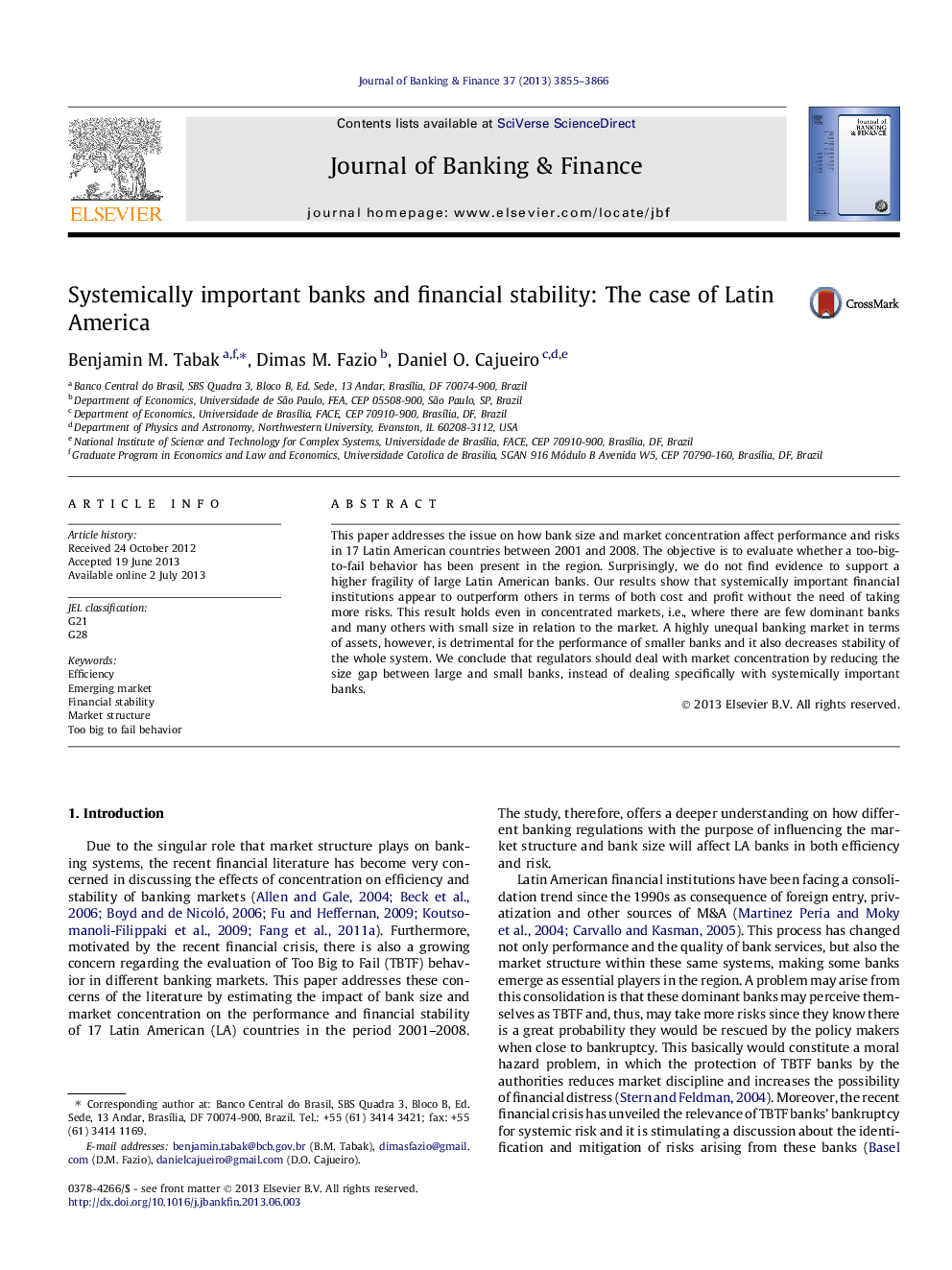| Article ID | Journal | Published Year | Pages | File Type |
|---|---|---|---|---|
| 5089215 | Journal of Banking & Finance | 2013 | 12 Pages |
Abstract
This paper addresses the issue on how bank size and market concentration affect performance and risks in 17 Latin American countries between 2001 and 2008. The objective is to evaluate whether a too-big-to-fail behavior has been present in the region. Surprisingly, we do not find evidence to support a higher fragility of large Latin American banks. Our results show that systemically important financial institutions appear to outperform others in terms of both cost and profit without the need of taking more risks. This result holds even in concentrated markets, i.e., where there are few dominant banks and many others with small size in relation to the market. A highly unequal banking market in terms of assets, however, is detrimental for the performance of smaller banks and it also decreases stability of the whole system. We conclude that regulators should deal with market concentration by reducing the size gap between large and small banks, instead of dealing specifically with systemically important banks.
Related Topics
Social Sciences and Humanities
Economics, Econometrics and Finance
Economics and Econometrics
Authors
Benjamin M. Tabak, Dimas M. Fazio, Daniel O. Cajueiro,
